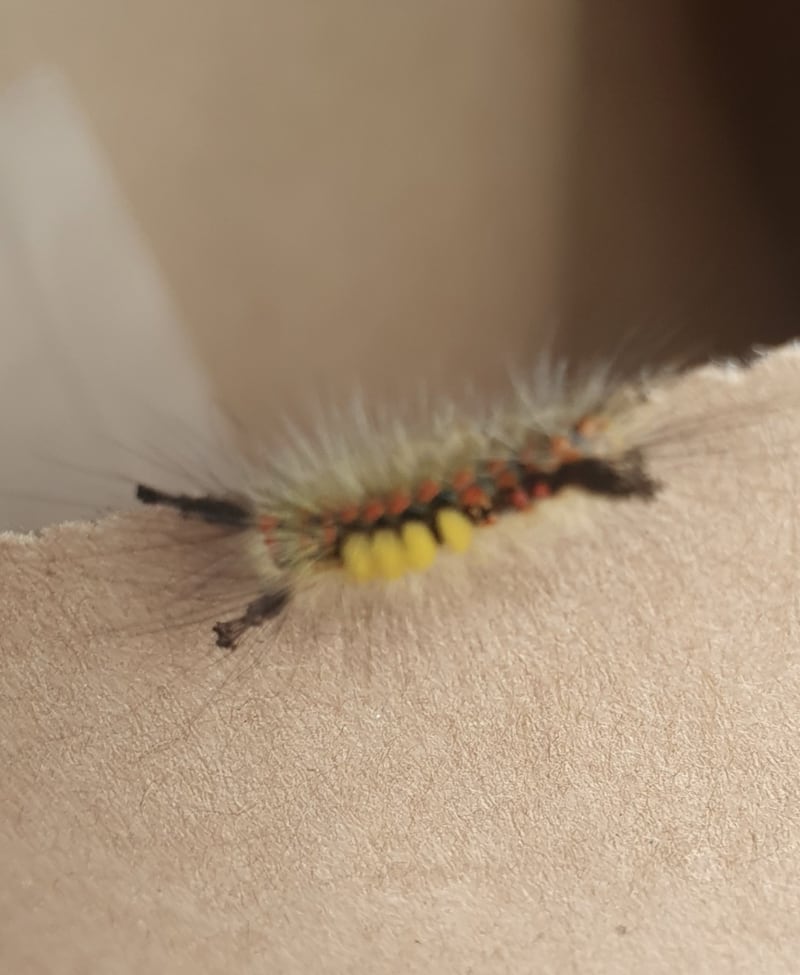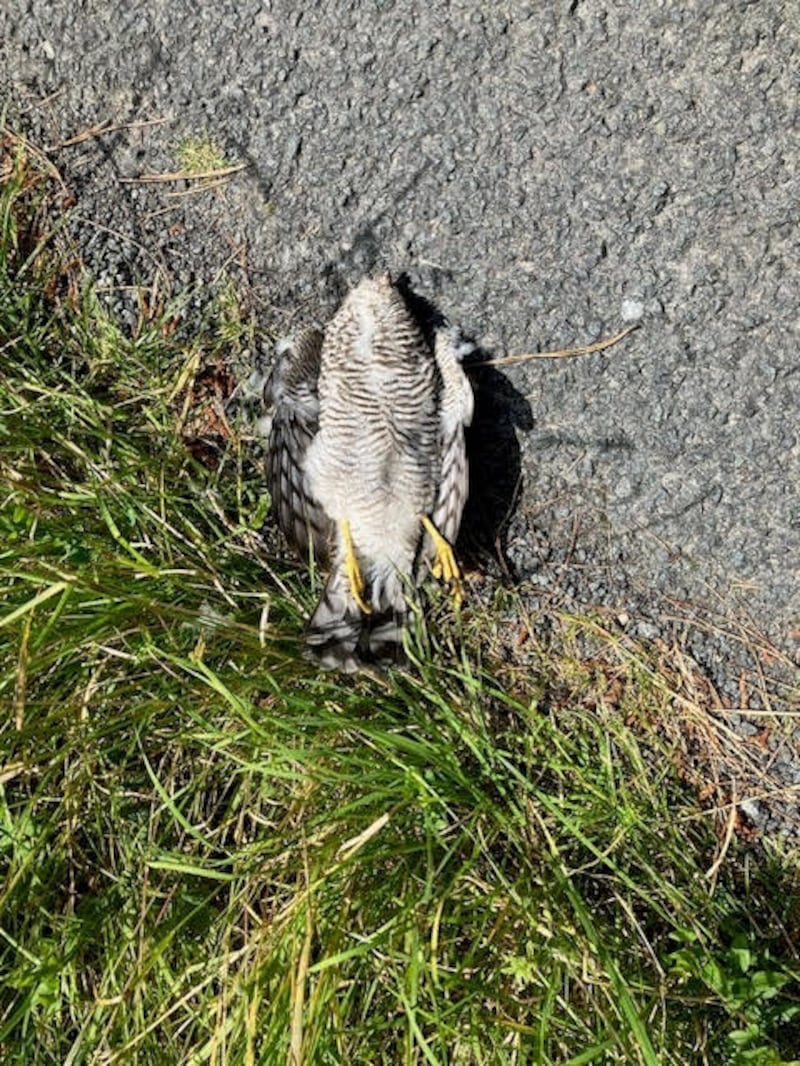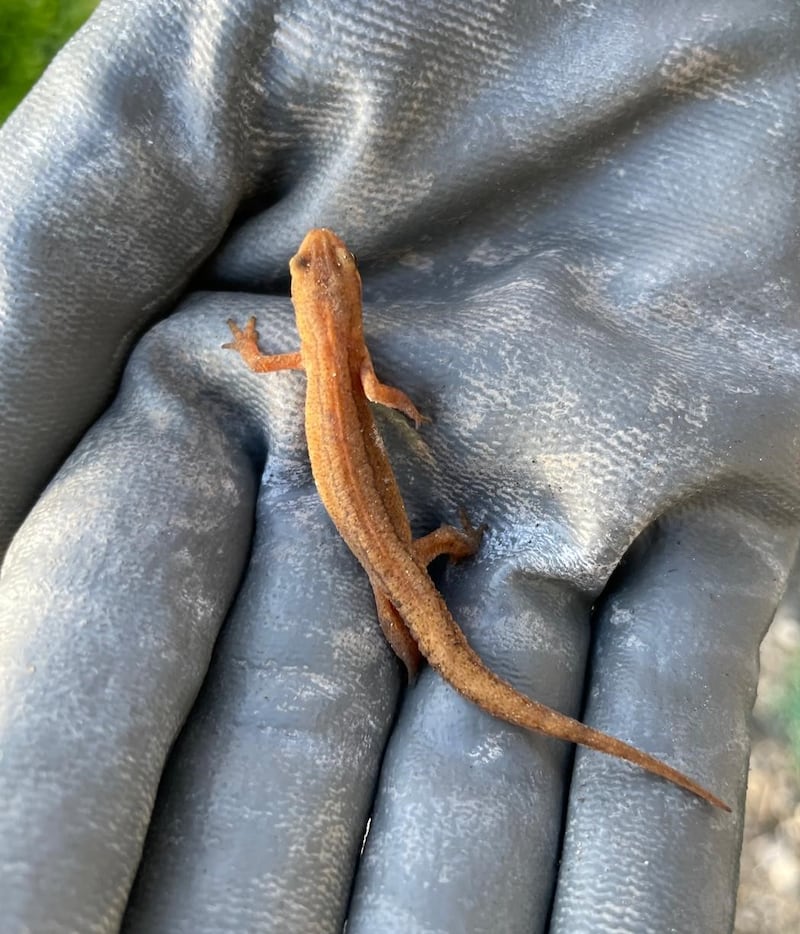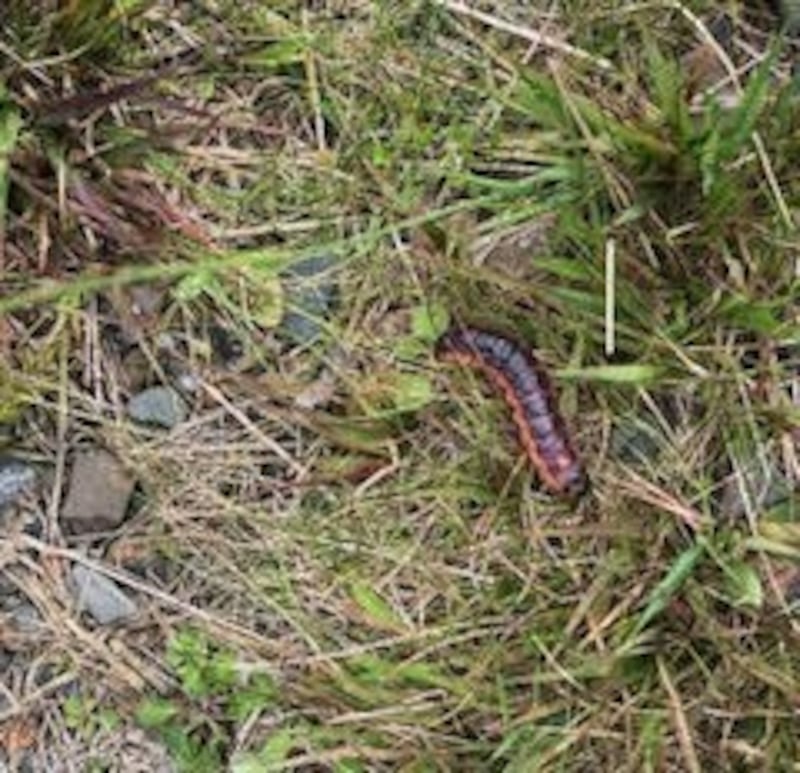Can you identify this little creature? Is it a vole? There was a pair of them climbing through the garden on a salvia plant, among others. They were so light they didn’t bend the weak twigs. David Lambert, Clontarf, Dublin
It is a field mouse, which is about 9cm long and with a tail almost as long as it body. It can weigh about 17 grammes, which is very light. We only have one vole (the bank vole), which is heavier, furrier and has a much shorter tail. It is a south and west species and hasn’t yet spread as far as Dublin.

This little beauty was recently on the rim of a TK Maxx bag when I opened my car boot. I have never seen anything like it. Hard to tell one end from the other; is it a moth or butterfly caterpillar? Paul Downey, Waterford
It is the caterpillar of the vapourer moth. It is difficult to work out whether it is coming or going, but the four yellow tufts of hairs are towards the front end. The hairs on its body can cause serious skin irritation if handled, so I hope you didn’t find out the hard way. Caterpillars feed on the leaves of various deciduous trees. Adult females are flightless and males are chestnut coloured, with a distinct white spot on the rear of each forewing.
RM Block

We spotted the lifeless body of a bird lying by the roadside on Horn Head, just outside Dunfanaghy. We looked at our bird book and wondered if it was a peregrine falcon? It was about 9 inches long. What do you think happened to it? Would it have been hit by a car? Robin and Valerie Morton, Dunfanaghy, Co Donegal
This is the remains of a female sparrowhawk. Peregrines are much bigger than sparrowhawks – 48cm as opposed to 28cm (11 inches including the head). Sparrowhawks hunt by flying fast along a hedgerow and then whipping across suddenly to the other side to grab the prey bird in its talons. A car driver on a narrow road wouldn’t be able to avoid a collision. An opportunistic scavenger subsequently made off with the nutrient rich brain- filled head.
[ A jay with messy feathers, and a bumblebee dishevelled after a night outOpens in new window ]

I recently found this newt while working in the garden and returned it safely to the hedgerow after its photo op. Katrina Collins, Cork
Newts, along with frogs and natterjack toads, make up our three resident amphibian species. This is the common newt. It needs a pond in March after hibernation to mate and lay eggs in. It leaves in July and spends the rest of the summer and the hibernation period in the winter in thick grass or areas with stones and timber. After dark they emerge in search of food such as worms, slugs, snails and insects. They never have scaly skins like lizards do and can also be distinguished by the four toes on their front legs as opposed to five on lizards.

Whilst walking with my grandchildren Colm, Dara and Emma on the Mines in Silvermines, we found a goat moth caterpillar on a gravel path. We took it back to the house and looked it up on the web, where we found out that they can destroy trees. As they have a lot of old trees in their garden, we took it back to where we found it. Jacquie Hennessy
Karl Kennedy also found one burrowing into an old tree trunk in a rural, boggy garden in Castletownbere. Yours was looking for a pupation site while Karl’s was feeding on the timber of the tree, where it can live for three or four years before leaving to pupate underground.
Please submit your nature query, observation, or photo, with a location, via irishtimes.com/eyeonnature














